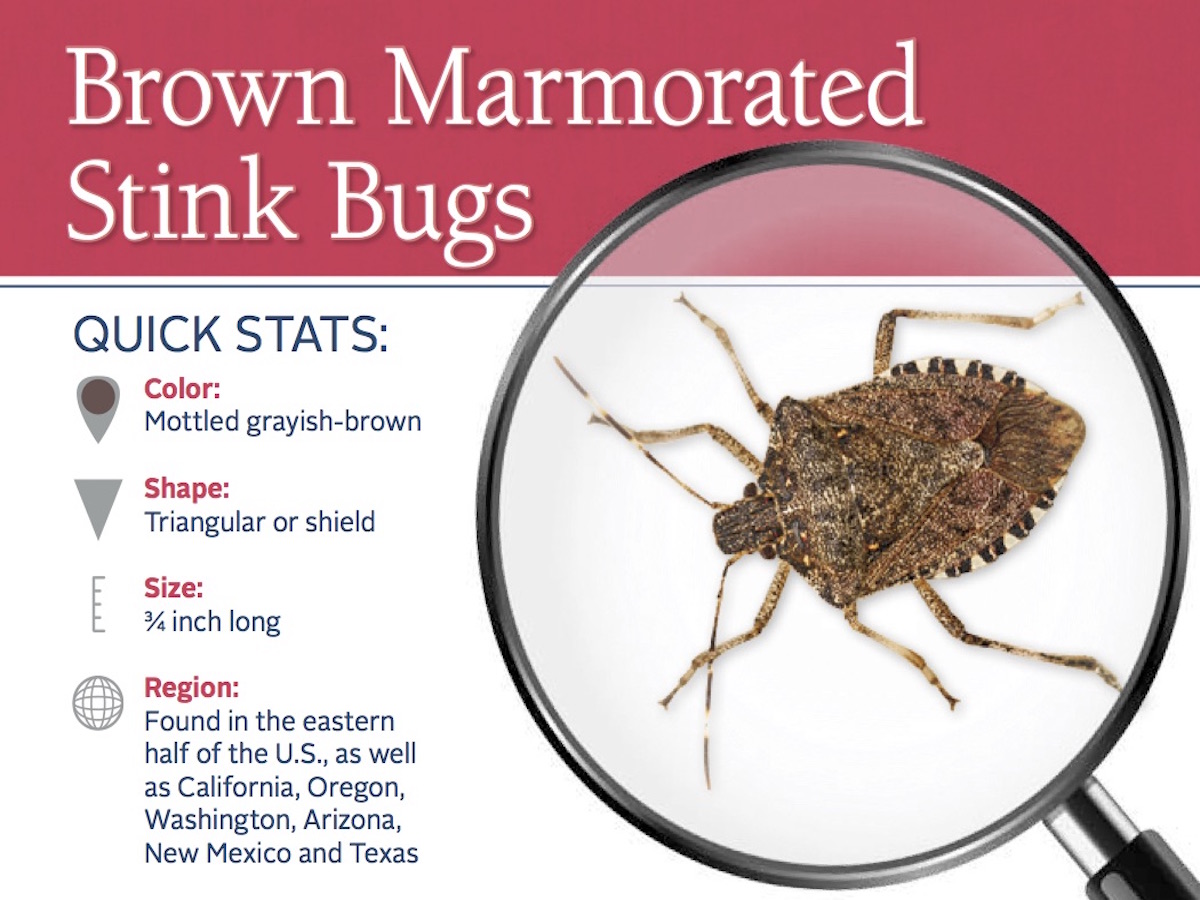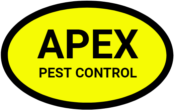
The brown marmorated stink bug is a sucking insect (like all Hemiptera or “true bugs”) that uses its proboscis to pierce the host plant to feed. This feeding results, in part, in the formation of dimpled or necrotic areas on the outer surface of fruits, leaf stippling, seed loss, and possible transmission of plant pathogens. It is an agricultural pest that can cause widespread damage to fruit and vegetable crops. In Japan, it is a pest to soybean and fruit crops. In the U.S., the brown marmorated stink bug feeds, beginning in late May or early June, on a wide range of fruits, vegetables, and other host plants including peaches, apples, green beans, soybeans, cherries, raspberries, and pears.
The brown marmorated stink bug is more likely to invade homes in the fall than others in the family. The bug survives the winter as an adult by entering houses and structures when autumn evenings become colder, often in the thousands. In one home, more than 26,000 stinkbugs were found overwintering. Adults can live from several months to a year. They enter under siding, into soffits, around window and door frames, chimneys, or any space which has openings big enough to fit through. Once inside the house, they go into a state of hibernation. They wait for winter to pass, but often the warmth inside the house causes them to become active, and they may fly clumsily around light fixtures and sunlit windows. Not surprisingly, stink bugs do stink when crushed. Thus the best way to deal with stink bugs that are active within the home is either by vacuuming them up or grabbing them with a piece of toilet tissue and flushing them down the toilet.
 Stink bugs are more resilient than the other fall invader insects that follow the same m.o. such as box elder bugs, asian beetles, and cluster flies. Like the other perpetrators, the best treatment is an exterior pyrethroid application in the fall as soon as they appear. However, stink bugs have shown resistance to pyrethroids, requiring a higher dose to induce mortality. Thus, the use of a chemical that also has repellent properties is necessary for the best result.
Stink bugs are more resilient than the other fall invader insects that follow the same m.o. such as box elder bugs, asian beetles, and cluster flies. Like the other perpetrators, the best treatment is an exterior pyrethroid application in the fall as soon as they appear. However, stink bugs have shown resistance to pyrethroids, requiring a higher dose to induce mortality. Thus, the use of a chemical that also has repellent properties is necessary for the best result.
